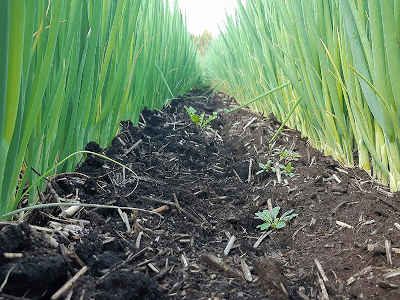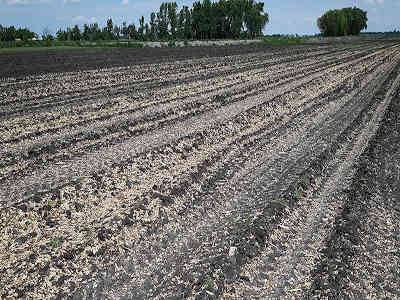By Kaine Korzekwa
In many regions of the world, farming must be done on areas of soil categorized as histosols. Histosols have a thick layer of rich organic matter, called peat.

Scientists are concerned, because farming can cause these soils to lose valuable carbon.
That’s where Jacynthe Dessureault-Rompré and her team at Laval University in Canada come in. She is trying to show that histosols can be sustainably used for farming.
To do this, the research team performed a two-step experiment that involved adding different kinds of plant material to the soil. Their work is similar to how a backyard gardener may add compost to soil to add nutrients that have been lost.
“The first objective was to get a better understanding of plant material decomposition,” Dessureault-Rompré says. "We looked at decomposition qualities of specific plant materials and how these affected long-term carbon stores in the soil. The second objective was to determine which plant performed best based on simulations of the long-term soil carbon storage.”
Carbon in these soils is lost by erosion, tillage and a natural process called mineralization. The carbon is released from the soil as carbon dioxide, a harmful greenhouse gas, into the atmosphere.

For their first experiment, the team used three common biomass crops: sorghum, miscanthus, and willow. They put plant material from these crops inside permeable bags and placed the bags directly in the soil.
Then, they analyzed which plant materials had the best decomposition characteristics. The ones that broke down slowly are the best for storing carbon in the soil longer.
“The field decomposition study gave us data on what happened to the three different plant materials over a period of 17 months,” Dessureault-Rompré says. “A good candidate is a crop that will last longer in the soil because the buildup of the carbon stock will be more efficient, therefore you need less biomass applied each year. The stability characteristics of the plant material are very important.”
Next, researchers used decomposition data to simulate how much each plant would help the soil over a long period of time. They found that miscanthus and willow performed much better than sorghum. They also calculated amounts of the plants that would help the soils be the most sustainable.
“If you have a crop such as miscanthus that decomposes less than sorghum, the buildup over the years is much more efficient,” she explains. “The simulation part added a new perspective because we were then able to see that carbon equilibrium is something that can be achieved. It was fantastic to see that adding plant material year after year allows farmers to overcome the carbon lost during farming in histosols.”
Click here to see more...